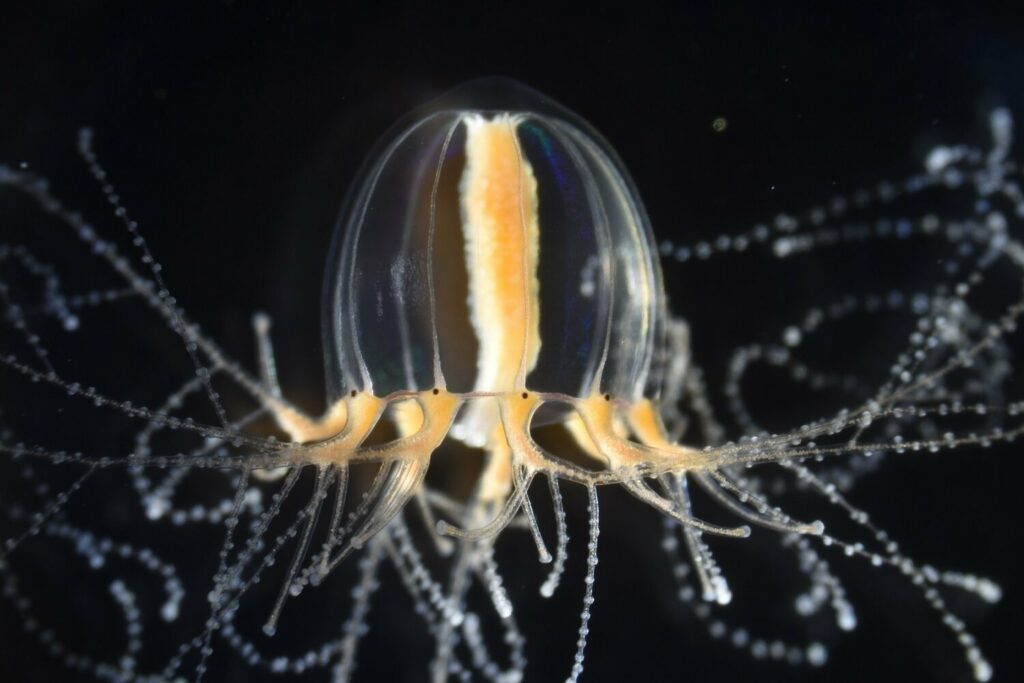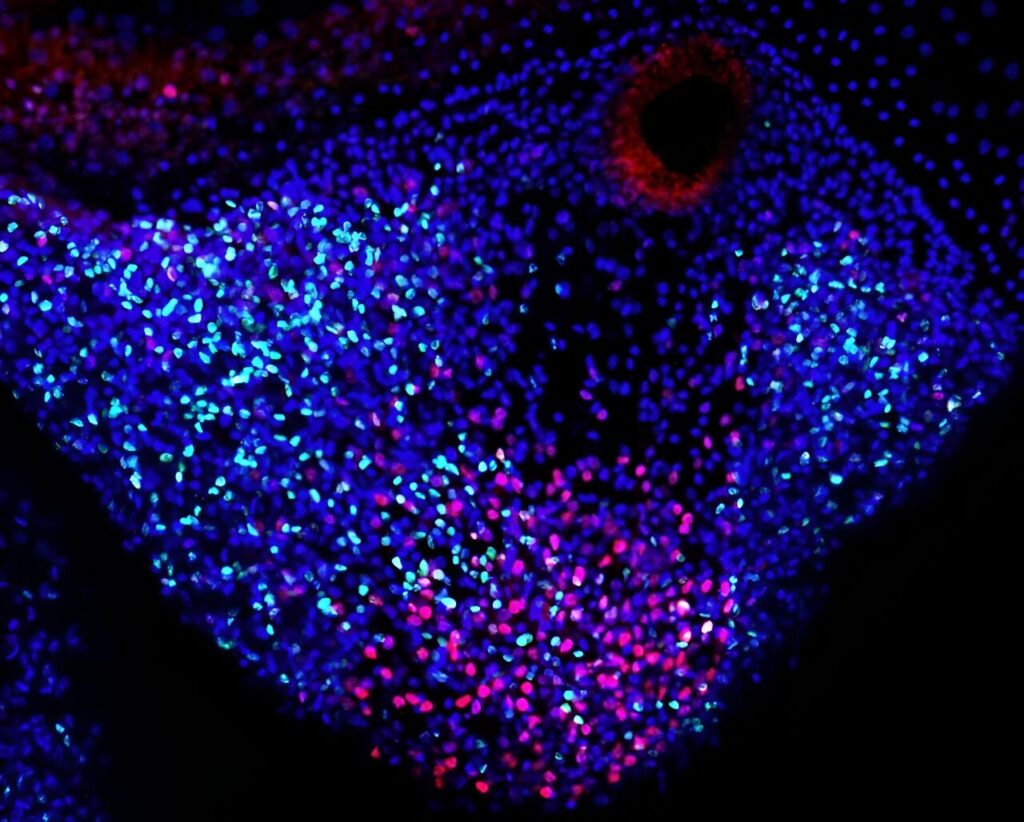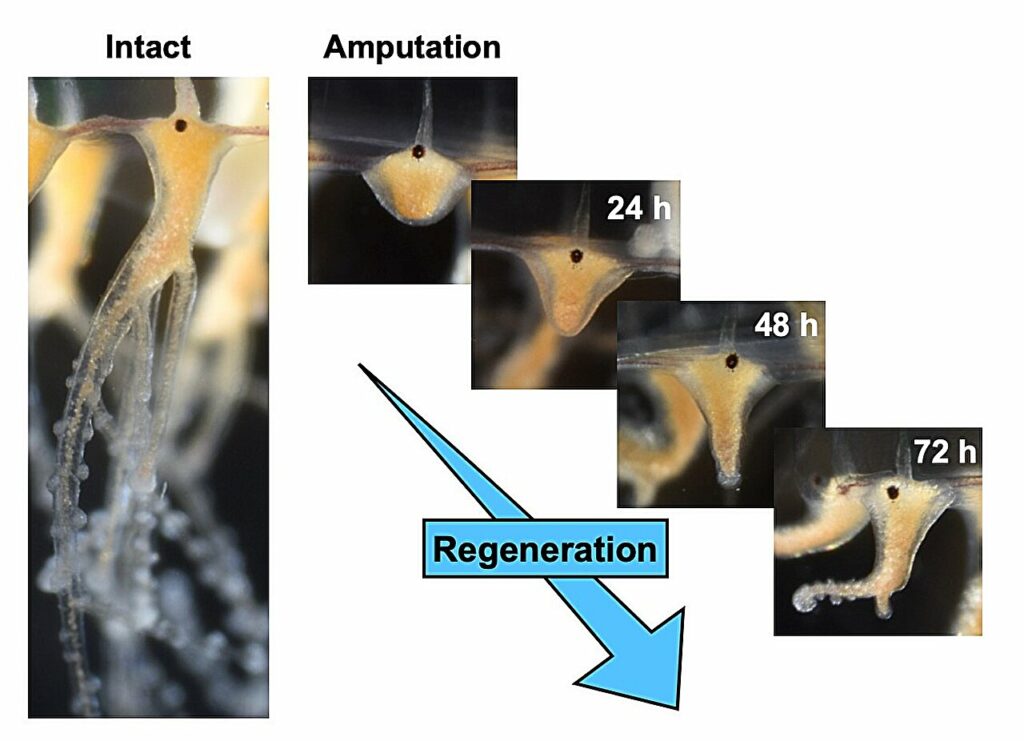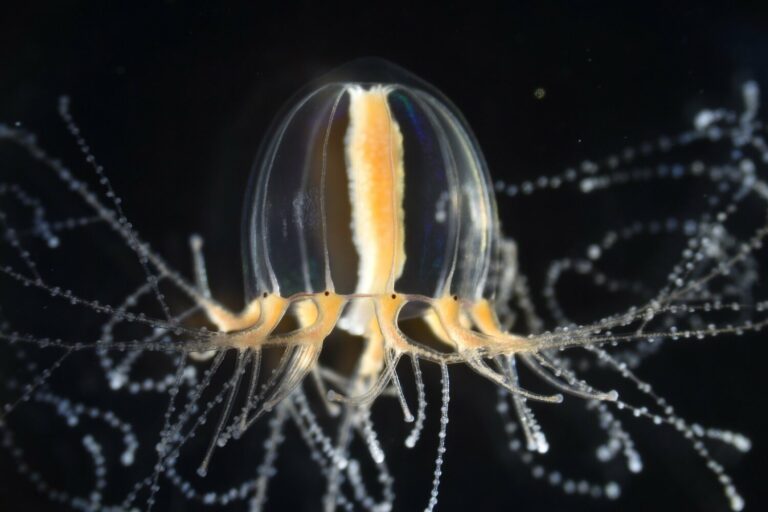Regeneration of Functional Tentacles in Jellyfish Within a Matter of Days
At approximately the size of a pinkie nail, the jellyfish species Cladonema can regenerate a severed tentacle within two to three days—an intriguing phenomenon. However, the mechanism behind this regeneration, common in various species like salamanders and insects, involves the formation of a blastema, a cluster of undifferentiated cells capable of repairing damage and developing into the missing appendage.
While jellyfish and other cnidarians, such as corals and sea anemones, display impressive regenerative capabilities, the process of blastema formation in these organisms has remained enigmatic until now. A research team based in Japan has unveiled that at the injury site, stem-like proliferative cells, actively undergoing growth and division but not yet specializing into specific cell types, emerge and contribute to the formation of the blastema.

“Crucially, these proliferative cells with stem-like characteristics in the blastema differ from the resident stem cells situated in the tentacle,” explained Yuichiro Nakajima, corresponding author and lecturer at the Graduate School of Pharmaceutical Sciences at the University of Tokyo. “The cells that proliferate specifically for repair primarily contribute to the epithelium—the thin outer layer—of the newly formed tentacle.”
Nakajima clarified that the resident stem cells, present within and around the tentacle, play a role in generating all cellular lineages during both homeostasis and regeneration. This implies that they are responsible for maintaining and repairing the necessary cells throughout the jellyfish’s lifespan. In contrast, the proliferative cells specific to repair only emerge in response to an injury.

“Collaboratively, the resident stem cells and the repair-specific proliferative cells facilitate the swift regeneration of a functional tentacle within a few days,” Nakajima remarked, emphasizing the significance of tentacles for jellyfish in hunting and feeding. Sosuke Fujita, the first author and a postdoctoral researcher in Nakajima’s lab at the Graduate School of Pharmaceutical Sciences, elaborated on the implications of this discovery for understanding the variations in blastema formation among different animal groups.
“In this investigation, our objective was to elucidate the mechanism of blastema formation, utilizing the tentacle of the cnidarian jellyfish Cladonema as a regenerative model in non-bilaterians, or animals that do not undergo bilateral—or left-right—development during embryonic development,” Fujita explained. He added that the findings may offer insights from an evolutionary standpoint. For instance, salamanders, classified as bilaterian animals capable of regenerating limbs, exhibit a limb regeneration process that involves stem cells tailored to specific cell-type requirements, a mechanism akin to the observed repair-specific proliferative cells in jellyfish.

“Fujita remarked, “Given that repair-specific proliferative cells are analogous to the restricted stem cells found in the limbs of bilaterian salamanders, we can infer that the formation of a blastema by repair-specific proliferative cells is a shared feature independently acquired for the complex regeneration of organs and appendages during the evolution of animals.”
However, the exact cellular origins of the repair-specific proliferative cells observed in the blastema remain unclear. The researchers highlight that the current tools available for investigation are too limited to discern the source of these cells or to identify other distinct stem-like cells. Nakajima emphasized, “It would be crucial to introduce genetic tools that enable the tracing of specific cell lineages and manipulation in Cladonema.
Ultimately, comprehending the mechanisms of blastema formation in regenerative animals, including jellyfish, may contribute to the identification of cellular and molecular components that enhance our own regenerative capabilities.”
This article is republished from PhysORG under a Creative Commons license. Read the original article.
Do not forget to share your opinion with us to provide you with the best posts !




0 Comments